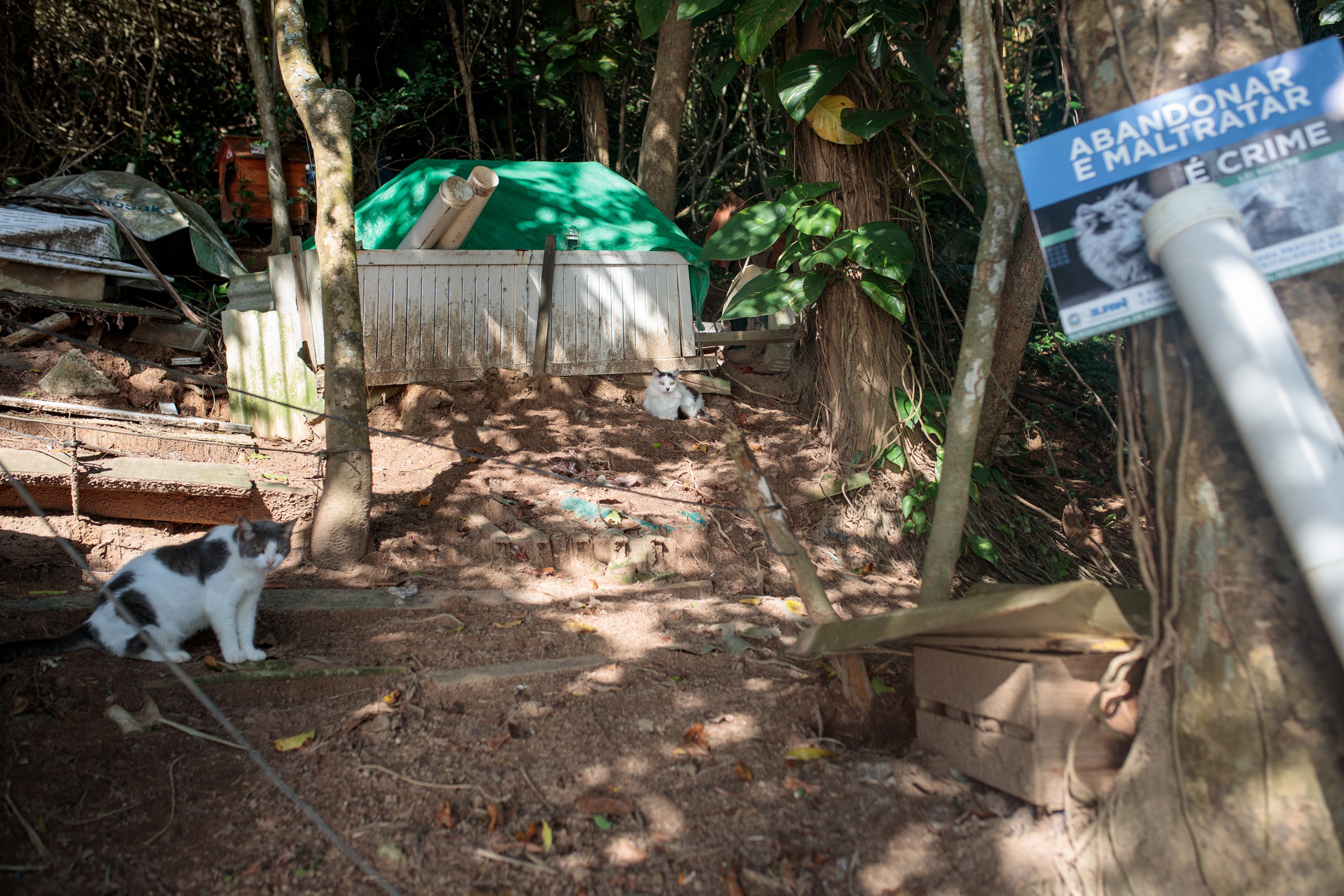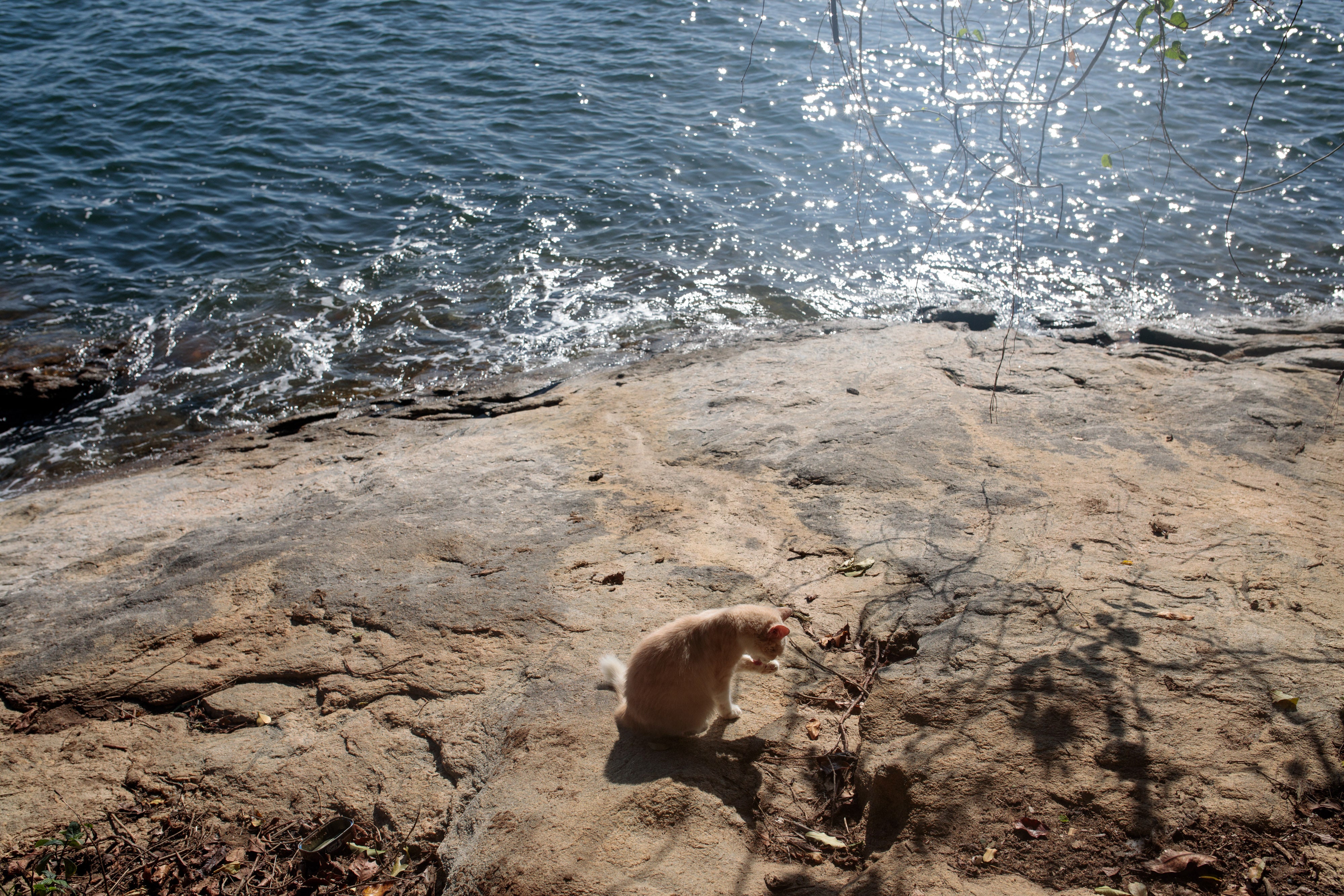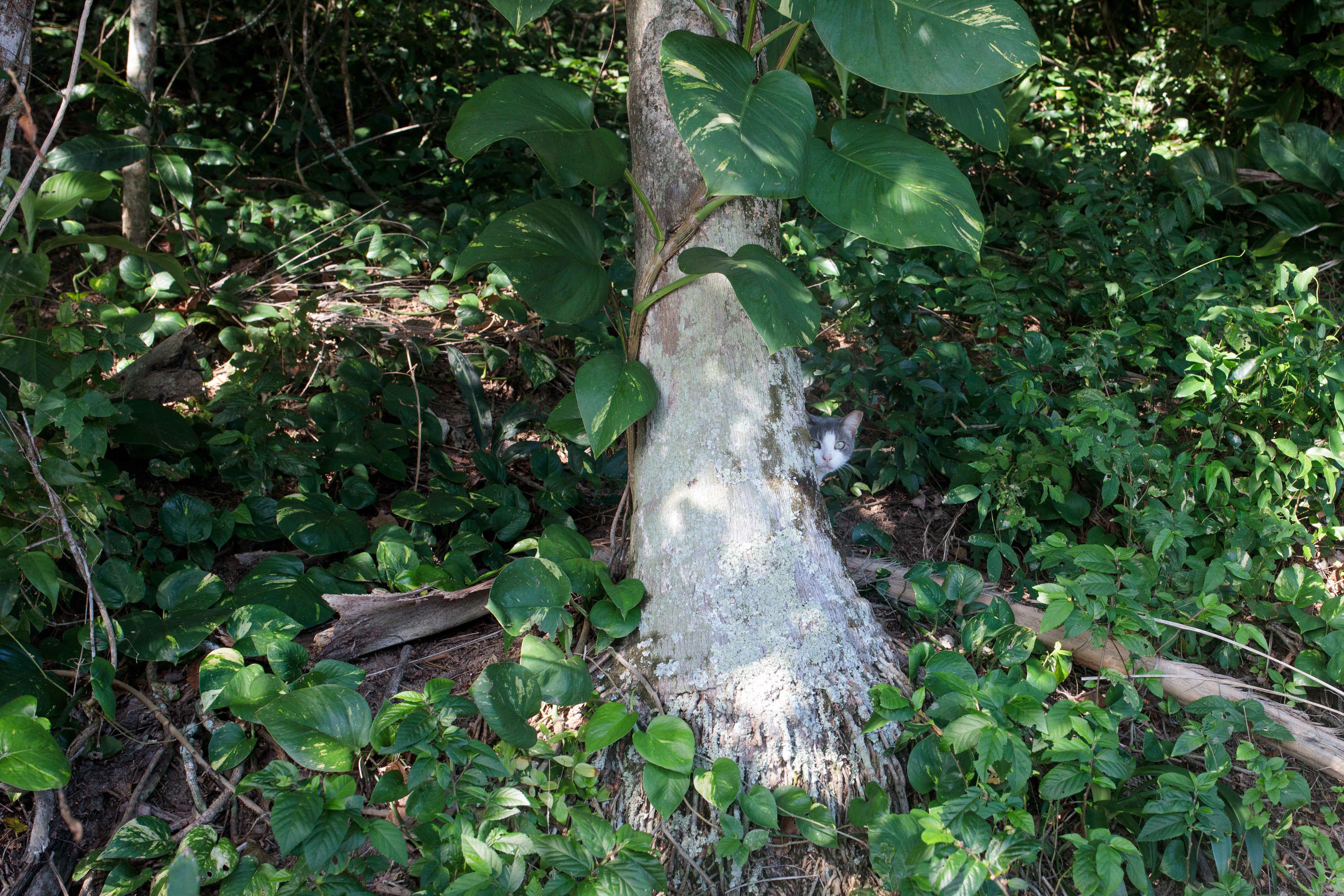‘The cats had grown to the size of dogs and gone feral’: On Brazil’s Island of the Cats
Many of the rumours about Brazil’s ‘Island of the Cats’ may not be true, but animals are proving a problem for the isle’s ecosystem, and officials aren’t sure what to do, writes Terrence McCoy

Your support helps us to tell the story
From reproductive rights to climate change to Big Tech, The Independent is on the ground when the story is developing. Whether it's investigating the financials of Elon Musk's pro-Trump PAC or producing our latest documentary, 'The A Word', which shines a light on the American women fighting for reproductive rights, we know how important it is to parse out the facts from the messaging.
At such a critical moment in US history, we need reporters on the ground. Your donation allows us to keep sending journalists to speak to both sides of the story.
The Independent is trusted by Americans across the entire political spectrum. And unlike many other quality news outlets, we choose not to lock Americans out of our reporting and analysis with paywalls. We believe quality journalism should be available to everyone, paid for by those who can afford it.
Your support makes all the difference.Eduardo Mayhe Ferreira has heard the stories for years, of how there was an island off Brazil’s southeastern coastline that looked deserted but wasn’t. Hidden within the dense tree cover were hundreds of abandoned animals.
Officially named Ilha Furtada, it was known to almost everyone as Ilha dos Gatos: Island of the Cats.
It was rumoured to be dangerous to visit. The cats had grown to the size of dogs and gone feral, people said. They would attack outsiders. One Brazilian reporter, writing of the “mysterious” island, claimed 750 “wild” cats roamed its jungle; others said more. The number seemed to climb with every telling.
Mayhe Ferreira, a municipal veterinarian in nearby Mangaratiba, took a motorboat across the translucent waters to see for himself. Until then, he had never stepped onto the island but knew enough to understand there was a problem. Because at least one rumour was true: Over the past year, as the coronavirus pandemic devastated Brazil, the number of cats on the island had grown substantially. Two distinct colonies had formed. Numbers were hundreds strong, and each day seemed to bring more. With them came the danger of greater damage to the island’s ecosystem, but without any agreement over what to do about it.
The island was coming into focus, an emerald hubcap atop blue waters.
Along this sun-soaked coastline, a global phenomenon is playing out. These are the pets left behind by the pandemic. The coronavirus crisis has left millions of pet owners dead or impoverished, unable to tend to their animals. In wealthy countries such as the United States, shelters and personal networks have absorbed much of the surge. But across the developing world, where shelter systems are less robust and street animals are common, a growing number of animals have simply been abandoned.
Many of the cats, seeing that the officials hadn’t brought food, grew tired of the visitors. Some returned to the small shelters. Others disappeared into the trees
The challenge is particularly acute in Brazil, where the coronavirus has killed more than 465,000 people, ignited a housing crisis and caused widespread hunger. Pet shelter managers in the country say they’ve been overwhelmed. That includes the shelter nearest the Island of the Cats. Some days, shelter director Andrea Rizzi Cafasso says, people arrive with a car full of cats. So many that she can’t accept them all.
When she declines, she says, she gets the response: “If you don’t take them, they’re going out to Island of the Cats.”
From a distance, Mayhe couldn’t yet see the cats. He knew people all over the region had long sent unwanted felines here, either dropping them off themselves or paying a boatman a few bucks to make the trip. It became part of the local culture, a last stop for unwanted cats, who either learned to survive from hunting and food left by visitors or perished.
What to do about them has divided the community. The city wanted people to stop feeding the cats, saying it encouraged further abandonment. But animal lovers called that barbaric. The cats would die without that care. There’s nothing on the island, they say. No food. No water. Just cats.
The boat docked, and here they came, loping out of the trees to cluster at the water’s edge, all mangy fur and narrowed eyes.
No one can say for sure how the cats first arrived. Officials in Mangaratiba say a family tried to make a life out here decades ago, but soon gave up, leaving behind a pair of cats that started multiplying. Boatmen say a restaurant closed down, and the owners abandoned their cats on the way out. A veterinarian says an old man confessed to her that he was the first person to bring cats here – but when he was reached for comment, he vehemently denied it.
The unanswered questions have fed into local lore. Few had wanted to visit Ilha Furtada, one small island among many, bereft of beaches and covered in spiders. But Ilha dos Gatos was a whole other story: It became a stop for island-hopping tourists. Some would ride water scooters to the island just to get a look. Many came to believe that the island cats had it better than city cats, who had to scratch and claw out an existence on the streets.

“They have all they need out there,” reasons boatman Miguel Campos, 61. “There are birds to hunt, and they have other food. There are seeds and insects and snakes they can eat.”
But Amélia Oliveira, a veterinarian who travels Brazil caring for animals, says the myth is far removed from the reality. In 2012, a friend sent her video from the island. It wasn’t cat paradise. It was Cat Alcatraz. There wasn’t even a fresh water source out there.
“I couldn’t leave the cats out there in such a situation,” she says. “I agreed to go the same hour.”
She found the island swarming with an unknown number of cats. Some approached her, purring. Others were totally feral. They had been born on the island, knew nothing of humankind, and would be impossible to socialise. She brought back some of the agreeable ones for adoption and started capturing and neutering others. In the past decade, she says, 380 of the island’s cats have been neutered by her organisation, Veterinarians on the Road.
“The cat population was being controlled,” Oliveira says.
Organisations and a retired couple left food and water for the cats. Others set up small shelters. Fishermen dropped off part of their catch.
But when the pandemic hit, the delicate balance came undone. The cats quickly grew in number. People, locked inside, stopped leaving food and water. Reports of cat cannibalism started to circulate. What had began as a local oddity – even a tourist attraction – had become a public embarrassment and an ecological problem.
Something had to be done.
But the officials, looking at the squalor of the cat dwellings, said the situation was more complicated than social media absolutism
Some of the cats approached the visiting city workers, rubbing against their legs. Others paced the shoreline, back and forth, back and forth. More eyed the outsiders, warily, from a distance.
The colony had the appearance of a feline shantytown. Cat-sized houses left by volunteers lay scattered about, alongside jugs to catch rain water and cat-food feeders in need of refilling. Brightly coloured spiders, each the size of an infant’s palm, clung to webs strung among the fixtures. The coastline was strewn with trash.
“Taking a cat out here is animal cruelty,” Mayhe says.
But with the shelters full, and many cats incapable of being socialised, bringing them back to the mainland would be equally complicated. Mangaratiba officials weren’t sure they could carry out the plan they had conceived.
They had wanted to send expeditions to explore the island and perform a cat census. Then erect surveillance cameras to deter abandonment and prosecute offenders. Then begin neutering. And, finally, let nature take its course. The docile cats would be adopted out. The others would live out their lives on the island, until there were none left.
The plan has been controversial. The city’s public health secretary was opposed to feeding the island cats. It would encourage others to maroon their cats there.
“People are attacking me like crazy on Facebook,” Sandra Castelo Branco told The Washington Post. “But I want to change the paradigm.”

Joice Puchalski, coordinator of a volunteer group that feeds the cats, was enraged. The animals didn’t ask to live on a deserted island. She says vultures had been seen circling the island. How could people abandon them again? She posted a screenshot of Castelo Branco's comments on Facebook and let loose: “LAMENTABLE.”
“How absurd,” agreed one of the dozens of furious responses.
“The biggest sickness Ms. Secretary has is poverty of the spirit,” said another.
But the officials, looking at the squalor of the cat dwellings, said the situation was more complicated than social media absolutism. “It’s terrible,” says Fernanda Porto, the city's environmental sub-secretary. “Are we going to let the animals die of hunger, or are we going to keep on giving food, which will only incentivise more abandonment?”
Many of the cats, seeing that the officials hadn’t brought food, grew tired of the visitors. Some returned to the small shelters. Others disappeared into the trees. Mayhe peered into the forest. There was no telling how many were in there. The city’s reconnaissance had done little but confirm a lot of work was ahead.
He and the others climbed back into the boat. They started the engine and pushed out to sea. The cats receded in the distance, moving shadows on one small island among many.
© The Washington Post
Join our commenting forum
Join thought-provoking conversations, follow other Independent readers and see their replies
Comments